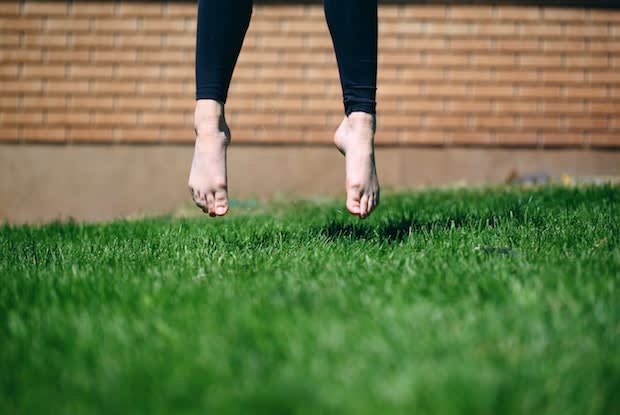Table of Contents
III. Tips for Preventing a Blood Clot
b. Sitting Right and Protecting Your Legs
c. Leg Elevation and Sleeping Position
d. Eating to Prevent Blood Clots
Why Do Blood Clots Occur?
Blood clots occur to prevent excessive bleeding. Your blood platelets will rush to the site of an injury and clot together so that you do not bleed out. Without this important function, minor injuries, like a paper cut, can be very dangerous. But internal injuries, like a plaque buildup that ruptures a blood vessel, can trigger this response from your blood platelets as well. When this happens, you risk a serious medical emergency like a heart attack, stroke, or deep vein thrombosis (DVT). [1]
If you are at risk of a blood clot, your doctor may prescribe blood thinners like Xarelto (rivaroxaban), Elmiron (pentosan polysulfate sodium), Coumadin (warfarin), or Eliquis (apixaban) to reduce your risk. Talk to your doctor to assess your blood clot risk. General factors that increase your blood clot risk include:
- Chronic inflammatory diseases
- Diabetes
- High blood pressure
- High cholesterol
- Obesity
- Smoking
- Trauma to the body [2]
Yes, the thought of a blood clot can be terrifying, but there are many steps you can take to lower the chance of a blood clot happening to you. Read on to learn about blood clot symptoms and prevention tips.
Before getting into blood clot prevention tips, it is important to know how to identify a blood clot. If you experience a blood clot, you may require emergency medical assistance right away. But how do you know a blood clot is occurring? Symptoms of this condition include: Loose-fitting clothes and socks can allow for better blood circulation in your body. This may reduce your blood clot risk. On the contrary, tights called compression stockings can improve your blood flow as well. Generally, loose-fitting clothing is the safer bet, but compression stockings can significantly improve circulation for some people, so use them if your doctor prescribes them. [4] Deep vein thrombosis (DVT) is more prevalent in those who are sedentary or have recently been injured. To prevent complications such as DVT, change your position often while staying seated for long periods, and try not to sit for more than one hour at a time. Crossing your legs while seated may feel comfortable, but it can actually restrict blood flow and increase your blood clot risk. Take steps to prevent knocks and bruises to your body. Also, do not put pillows underneath your knees because this may cut off blood from entering and exiting your calves. [4] Raising your legs slightly above your heart level from time to time can improve your circulation. You can do this by lying on a couch and resting your ankles on the armrest. Some people conveniently incorporate leg elevation while they sleep by raising the bottom of the bed with books by four to six inches. [4] The right diet can improve your overall health and subsequently reduce your blood clot risk. Talk to your dietician about improving your food habits. Generally, high cholesterol-friendly diets or high blood pressure-friendly diets can significantly reduce your blood clot risk. These diets are typically low in sodium and rich in anti-inflammatory properties. Studies have shown that turmeric, ginger, and garlic contain an antithrombotic agent that can reduce blood clot formation. Vitamin E can also reduce blood clotting in several ways. Healthy sources of vitamin E include almonds, safflower or sunflower oil, sunflower seeds, wheat germ oil, and whole grains. [5] If you have a high risk of developing blood clots, your doctor will likely suggest specific exercises that you should follow. Even if you are not at immediate risk for blood clots, staying active and participating in different types of exercises can do wonders for your overall health. Aerobic activities, such as jogging, swimming, or biking, can strengthen the blood vessels around your heart and improve vascular health. However, be cautious of high-contact sports where you are likely to sustain an injury because bruises and bumps may increase the risk of blood clots. [4] If you find that your commitments, responsibilities, or lifestyle increase your blood clot risk, work with your doctor to find a management plan that suits you. Many people have jobs that require sitting or standing for long periods, so you are not alone. Age can be a factor because your risk of high blood pressure, high cholesterol, and diabetes can increase as you grow older, but the right treatment plan can still help you live a fulfilling life. Medications like Xarelto (rivaroxaban), Elmiron (pentosan polysulfate sodium), Coumadin (warfarin), and Eliquis (apixaban) are anticoagulants that can be effective in preventing blood clots. Stay on top of your vascular health and take control of your blood clot risk by talking to a doctor today. The content in this article is intended for informational purposes only. This website does not provide medical advice. In all circumstances, you should always seek the advice of your physician and/or other qualified health professionals(s) for drug, medical condition, or treatment advice. The content provided on this website is not a substitute for professional medical advice, diagnosis, or treatment.
Symptoms of a Blood Clot
Tips for Preventing a Blood Clot
a. Wear the Right Clothing
b. Sitting Right and Protecting Your Legs

c. Leg Elevation and Sleeping Position
d. Eating to Prevent Blood Clots
e. Staying Active

Working with Your Doctor
